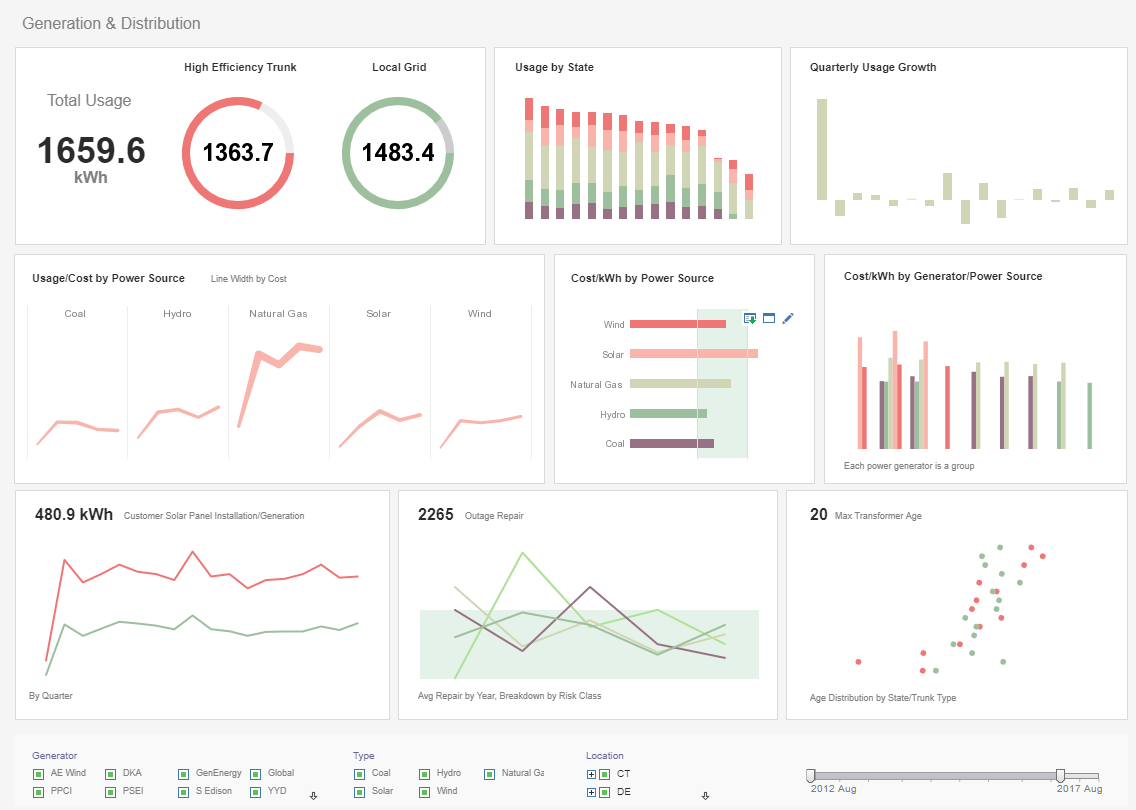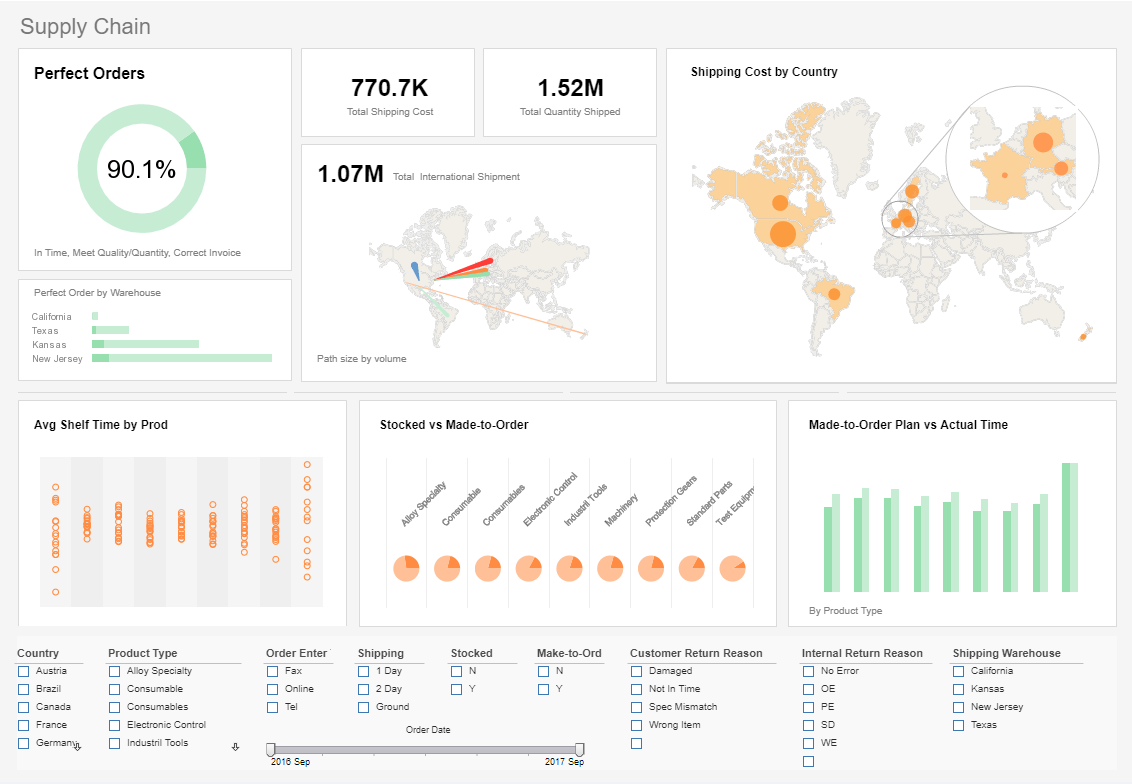Show More Dashboards
This is the continuation of a transcript of a presentation by Stu Worman from Indiana University at an IT conference for unversity IT professionals.
Let me show you some more dashboards. These are our services, and this is what they are right now. They are all running perfectly. Let’s look at our downloads for our software packages. What we are looking at here. This is product page hits, basically people shopping. What are they looking at? This is actual downloads.
It is important for us to know how many pages people go through before the decide to download something. Here’s our top 20. But we can go here and say “ok, here are the packages that were downloaded.” You know this was shocking to me. I had this service running for 5 years before I realized that on most days we have over 2,000 downloads of some software package on that system.
Now we have lots and lots of software that we distribute, but if we were distributing it by CD through book stores, that would be a lot of work. It would cost us a lot. We can also see how this looked last year. You can see even the software downloads have dropped.
| #1 Ranking: Read how InetSoft was rated #1 for user adoption in G2's user survey-based index | Read More |
Our enrollment is up. But I really think it is because we have better control over what is going on in our systems. So we have saved a lot of people from having to download something. They already have it.
What kind of dashboard information does the public see? This our main page. First of all, we have notices and alerts right here, and you can see all of our systems are operating normally right now. And let’s see if we could see a day where something interesting happened. Look at September 25th you can see we had regularly scheduled.
We have one system that sends out notifications to a list of recipients. It also posts it on this page. We have a little client application called IT Now that will notify you when something is up or down. We do a lot of communication as to what is going on in our systems.

More Articles About Reporting
BI Credit Operations Analyst - Operational business intelligence for a Credit Operations Analyst involves using data and analytics to gain insights and improve the efficiency and effectiveness of credit-related operations within an organization. Here are some examples of operational business intelligence initiatives that a Credit Operations Analyst may undertake: Credit Application Processing Time: Analyzing the time taken to process credit applications can help identify bottlenecks or inefficiencies in the credit approval process. By tracking and measuring the processing time, the analyst can identify areas where the process can be streamlined, such as automating certain steps, reallocating resources, or improving communication channels. Credit Approval Rate: Monitoring the credit approval rate helps evaluate the effectiveness of credit risk assessment and decision-making processes. The analyst can identify factors that contribute to higher rejection rates, such as inconsistent credit policies...
Incident Investigation and Root Cause Analysis - Industrial hygienists look at workplace occurrences in detail to identify the underlying reasons. In this case, key performance indicators (KPIs) include the duration of investigations, the precision of incident reports, and the efficacy of remedial measures. In order to avoid such accidents in the future, analytics are utilized to discover recurrent trends and systemic concerns. This enables targeted actions. Emergency Preparedness and Response Industrial hygienists use the following criteria to determine how prepared an area is for emergencies: reaction times, emergency equipment availability, and evacuation plan efficacy. Worker preparedness for crises is enhanced through KPIs linked to response training, emergency drills, and event simulation exercises. Analytics help find places where emergency response strategies need to be refined and enhanced...
Resources About Business Intelligence - This is a table of contents of useful product information about, and benefits of, InetSoft's business intelligence software for dashboards, reporting, and analytics: Accounting Business Intelligence Solution - Looking for a good solution for accounting business intelligence? InetSoft's pioneering BI application produces great-looking dashboards with an easy to use drag and drop designer. Maximize self-service for all types of users.. View a demo and try interactive examples...
Sales Coverage Analysis Dashboards - Sales Pipeline Metrics Tracking the sales pipeline is one of the core elements of a dashboard for sales coverage analysis. This KPI offers a quick overview of the several phases a lead or prospect experiences prior to becoming a client. Among the metrics used in this category are: Conversion Rates: The proportion of leads that advance from one step of the sales funnel to the next is tracked by conversion rates. A well-optimized sales process is indicated by a better conversion rate. Sales Velocity: The pace at which leads pass through the pipeline is measured by sales velocity. It takes transaction closing time into account, which improves revenue forecasting for businesses. Deal Size: Knowledge of deal sizes at various stages of the pipeline can lead to new sources of income. It aids in giving high-value opportunities priority...
What is Ad Hoc Reporting? - In a strict sense, an ad hoc report is a report that is created on the fly, displaying information in a table or a chart that is the result of a question that has not already been codified in a production report. There is a limit to the number of such production reports and business questions that can be anticipated and coded in advance so that users can consult them whenever they want. In a broad sense, ad hoc reporting is just a way to answer unanticipated questions. As businesses are always changing, the questions people want to ask of their data are always changing, so any reporting system needs to accommodate the creation and running of ad hoc reports. Making that an easy process for the average business user is key because most ad hoc report tools are designed for database experts to use, often requiring knowledge of query language, such as SQL...
| Previous: Operational Dashboards for Universities |
Next: Call Center Dashboard
|




